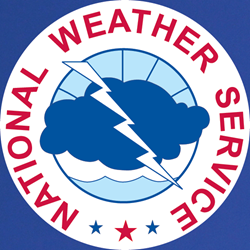Most pilots would love to have a crystal ball to predict the weather. The TAF or MOS on our favorite aviation planning apps are a good start, by where does the information come from? The National Weather Service (NWS) produces the Terminal Area Forecast (TAF), as well as many other products and resources that are available to help pilots get the best possible information on weather conditions.
Andrew Snyder, one of the Lead Meteorologists and the Aviation Program Leader at the National Weather Service Baltimore/Washington Forecast Office, created an aviation user group over the past few years to enhance communication and strengthen partnerships between the NWS and Mid Atlantic aviation community.
The group includes participants from the NWS, FAA, commercial airlines, air traffic control, airport operations, business aviation, and yes, flying clubs. They discuss ways to improve NWS services, identify issues, receive feedback, and establish best practices.
There are 122 local Weather Forecasting Offices (WFO) in the US and territories that have a specific area of responsibility that is generally about half the size of a medium sized state. Their primary responsibility is the issuance of TAFs at selected airports, but they also write an aviation forecast discussion. The WFO also engages with local users.
Make the Connection
Flying clubs looking to learn more about the various products, services and resources that are available for weather forecasting are encouraged to contact their WFO. It’s possible they could do a presentation, either in person or virtually. It’s a great opportunity to begin a relationship with the NWS and to improve club members’ knowledge and understating of weather. Each WFO is likely to be a little bit different, depending on the region and the specific weather hazards.
Andrew put together a presentation that has a lot of different elements that he’ll tailor to the individual group he is addressing. He provides an overview of the NWS, its structure and mission, as well as the various types of products available to pilots. He goes through a variety of aviation weather hazards, such as wind shear, icing, turbulence, thunderstorms, low ceilings and visibility. He’ll then go through the resources available online at https://aviationweather.gov.
“Flying is so dependent on the weather and pilots can find themselves in a lot of really dangerous situations if they don’t properly brief themselves,” Andrew said. “If sudden, unexpected weather develops, there are things to know to prepare yourself for those types of situations.”
That’s one of the benefits of developing a relationship with the local WFOs. It’s important to know the information sharing is a two-way street. Clubs can help educate the weather service, especially if the forecaster is someone who might not be as familiar with general aviation.
“Making a connection fosters a sense of trust between pilots and the weather service and confirms our sense of purpose that what we’re doing is helpful,” Andrew said. It also allows pilots an opportunity to provide feedback.
There might be a case where a flying club could start a discussion where they’ve noticed things with the forecast and ask the NWS to explain them. “Most people are receptive to receiving that feedback and providing explanations on those types of situations,” Andrew said.
Of all the products available on the NWS Aviation Weather Center website, Andrew recommends the GFA tool “because it pretty much has any piece of weather information that you could want in a plottable format—both current conditions and forecasts going out for at least 18 hours in most cases. In my opinion, that is the one stop shop to get the most bang for your buck.”
One of the tools that has become popular in the past several years is the MOS. The NWS leans heavily on the MOS when creating a TAF because the MOS has statistics and climatology built into it. “MOS was AI before there was AI,” Andrew said.
It takes the raw model data and bias corrects it. The individual computer models are not always great at generating visibility or ceiling height, Andrew said. Through the statistical correction, a lot of times the MOS will provide a better idea of what’s going to happen. “It’s like anything that comes from a model – it’s guidance, it shouldn’t be used as gospel,” Andrew cautioned. “But it’s a very good tool to use from a forecast perspective.”
Weather safety is a critical aspect of good pilot decision making. Knowing where to find the latest and most comprehensive weather briefing resources will greatly improve your chances of staying safe. Andrew said he “can’t stress enough to check the weather and check it again and make sure you’re aware of what’s going on” before you fly.
He added that the NWS wants to make “sure that flying club members have the resources they need to stay informed and stay safe when they’re flying. I think the relationships and the education are the two most important things that would come out of having this type of meeting or presentation.”
Don't forget to do your bit and give PIREPs!
Weather Resources